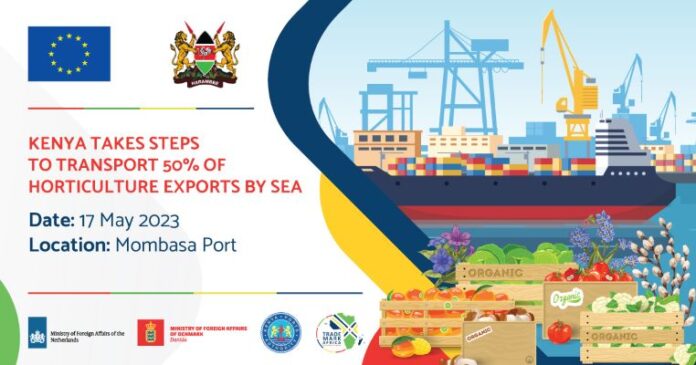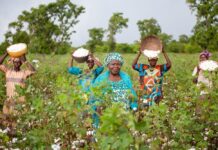The Kenyan government and players in the horticulture export sector have come up with a shift plan to move the country’s fresh produce exports from air to sea.
In this, the country is aiming to shift to green and sustainable transportation, with 50 per cent of all horticultural produce being ferried by sea by 2030 under the leadership of the Netherlands, supported by Denmark the European Union (EU), and TradeMark Africa (TMA).
Traditionally, air freight has been regarded as a faster and more reliable alternative for the shipment of goods. However, it is more expensive, detrimental to the environment, and transports much less in volumes and value compared to sea freight.
Studies show that air freight constitutes about 2.5 per cent of global carbon emissions, despite ferrying just 1 per cent of total global cargo. In contrast, sea freight produces about 2.9 per cent of carbon emissions and accounts for over 80 per cent of global trade by volume and 70 per cent by value.
This makes sea freight a much more sustainable and environmentally friendly alternative in the race for decarbonisation, according to Ms. Allen Sophia Asiimwe, Deputy CEO at TradeMark Africa.
“Sea freight is viable and a win-win option for all as Kenya gears to increase its volume of exports by 50 per cent by the year 2030. It is a more sustainable alternative, less expensive, and has an enormous carrying capacity,” said Asiimwe during the kick-off meeting at the Port of Mombasa marking the official start of engagements to map out pathways towards transitioning to moving more horticultural exports by sea.
Sustainable transportation
The push for sustainable transportation comes not just from the EU, which is one of Kenya’s major export destinations, but also from other major global actors and industry players.
Those attending the meeting agreed that the shift from air to sea freight will allay growing concerns about air freight’s large carbon footprint.
Consumers especially in Europe, are on the frontline of this push for a radical decarbonisation of value chains that deliver fresh produce to their supermarket shelves and dining tables.
The European Union Ambassador Henriette Geiger said, “The sector is ripe for an urgent and radical transition from air to sea freight, more than ever as a step in the right direction in the clamour for climate change action. Our support is directly related to the EU Green Deal which aims, among other things, to make the economy and trade more sustainable and part of the EU Global Gateway. A more sustainable export of Kenya’s horticulture goods is essential to ensure the growth of the sector in the future and all jobs and livelihoods that depend on it.”
The support from the EU is part of the Business Environment and Export Enhancement Programme (BEEEP), a five-year Sh3.8 billion programme with a goal to enhance competitiveness and raise the share of exports of Kenyan avocados, mangoes, and vegetables to Europe and other international markets.
Horticulture sector challenges
Implemented by TradeMark Africa, part of the program’s implementation initiatives will focus on resolving production, storage, logistics, and value-addition challenges that the horticultural sector faces.
“The transition from air freight to sea freight will have to go hand in hand with the private sector. It is important to create export volumes, optimize systems, and foster innovations in port development. Therefore, I am very happy to have attended the first public-private working group meeting to facilitate the shift from air freight to sea freight,” said the Ambassador for the Kingdom of the Netherlands to Kenya, Mr. Maarten Brouwer. The Netherlands also announced a trade mission to Mombasa and its Port in September 2023.
Horticulture is a leading export earner for Kenya generating Sh152.3 billion in 2022. The bulk of this is transported via air freight.








